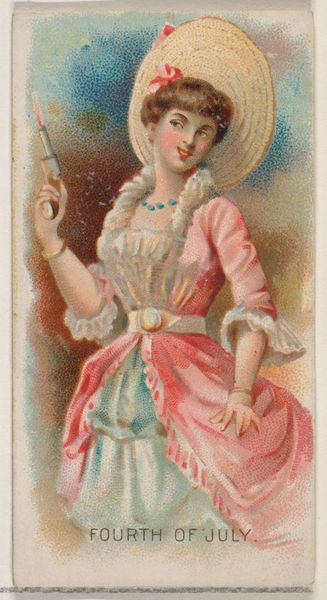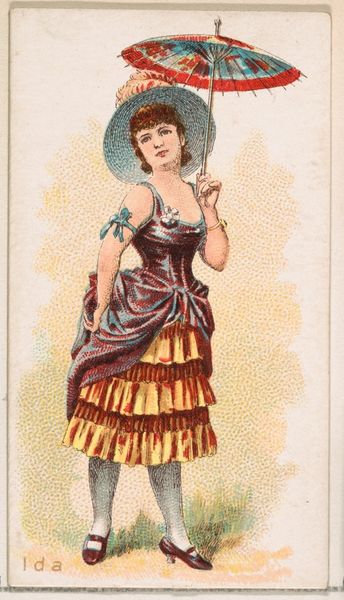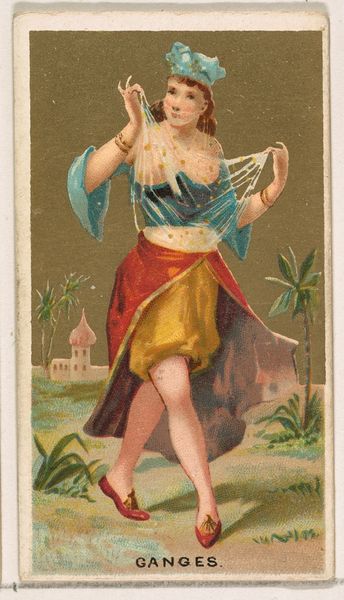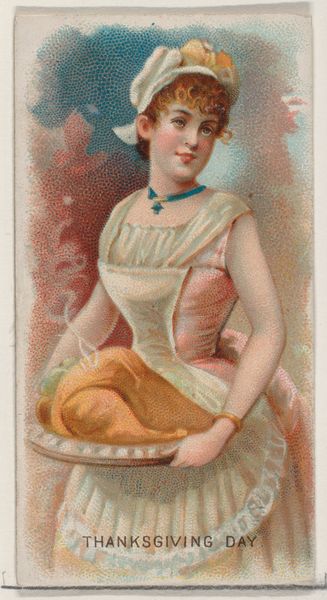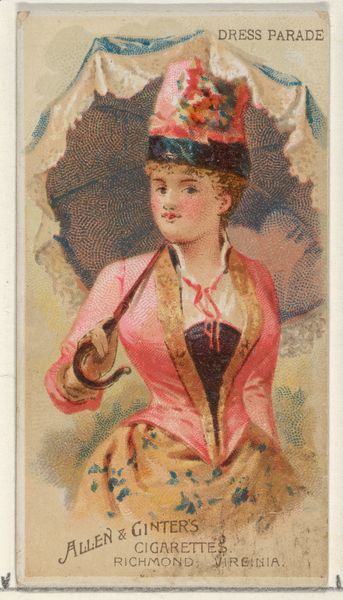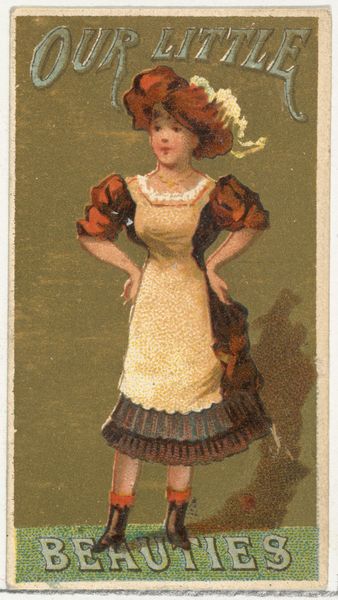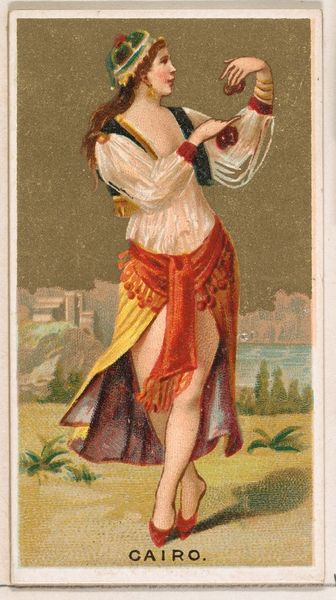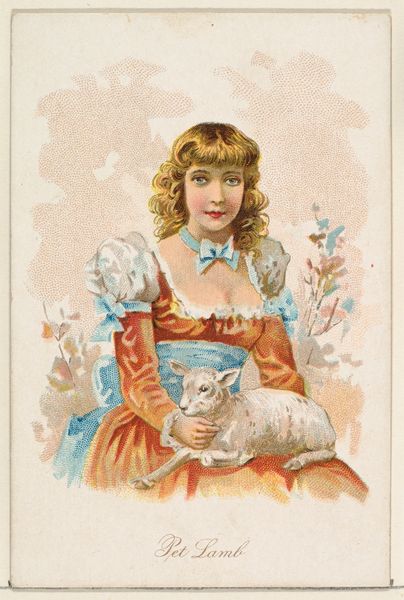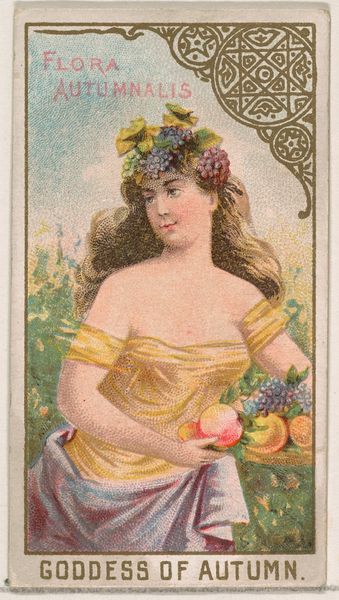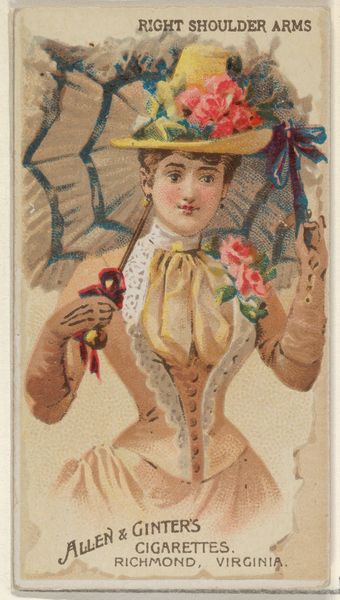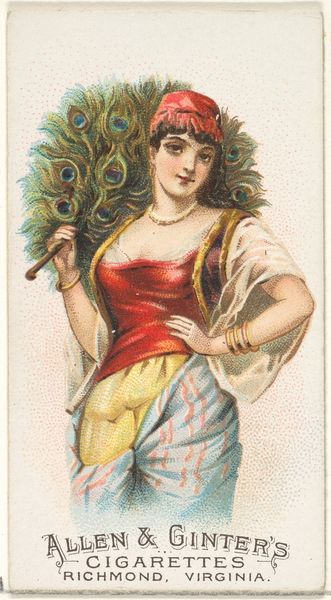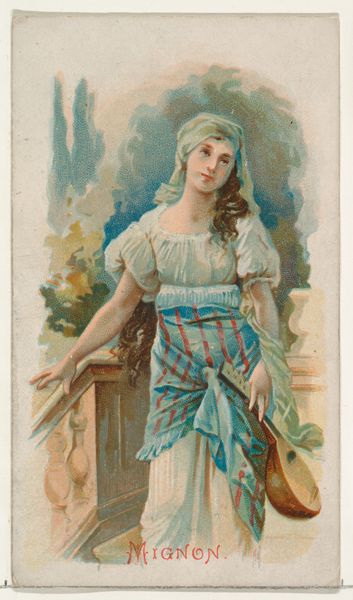
The Nile Bride, Egypt, from the Holidays series (N80) for Duke brand cigarettes 1890
0:00
0:00
drawing, print, watercolor
#
portrait
#
drawing
# print
#
impressionism
#
watercolor
#
orientalism
#
watercolour illustration
#
portrait art
#
watercolor
Dimensions: Sheet: 2 3/4 x 1 1/2 in. (7 x 3.8 cm)
Copyright: Public Domain
Curator: This lovely watercolor illustration, titled "The Nile Bride, Egypt," dates back to 1890 and was designed by W. Duke, Sons & Co. for their cigarette brand as part of the Holidays series. Editor: The muted tones give it a wistful, almost dreamy quality, don't you think? It feels a little like a sentimental fantasy, especially with the crescent moon peeking out behind the woman. Curator: Indeed. The style leans heavily into Orientalism, a 19th-century fascination with the "exotic" East that often romanticized and misrepresented cultures. It's fascinating to see how these commercial images played a role in shaping public perception of Egypt and its people. Editor: Precisely. Notice the figure's light skin and decidedly Western features; it seems to reinforce a Eurocentric idea of beauty and appropriation rather than representing any real Egyptian identity. Even the clothing, while inspired, seems heavily filtered through a European lens. Curator: Cigarette cards like these circulated widely, becoming cultural artifacts. The romantic vision of Egypt presented here must have significantly influenced many consumers. What kind of societal impact would images such as this produce in terms of social identity and class? Editor: It's a potent mix: a portrait of a bride, suggestive of new beginnings, but layered with these power dynamics, consumerism, and cultural fantasy. We see the fetishization of a culture through material goods, reinforcing colonial perspectives through commerce and popular art. Curator: Yes, though created for the very specific purpose of marketing, they reveal how the aesthetic tastes of the era were deployed for commercial goals. It certainly prompts us to consider art's role within capitalist culture. Editor: It's an example of a cultural lens. Looking at it critically today invites a richer discussion, questioning our assumptions, identifying those colonial legacies, and imagining the representation with sensitivity and historical accuracy. Curator: Absolutely. Seeing the multiple layers involved, we leave this image with more than just aesthetics. It urges us to delve deeper and explore its socio-historical meanings, and how cultural imagination took root. Editor: A brief encounter that is sure to make a profound exploration of art, social and political identities!
Comments
No comments
Be the first to comment and join the conversation on the ultimate creative platform.
